Click through the photo gallery to see more scenes from inside the Big Bop.
Article originally published April 29, 2014 by The Grid online (thegridto.com).
In the mid-1980s, the Queen-and-Bathurst area was a wasteland—until this multi-floor/multi-genre dance-club rocked the corner to life, and shifted the future course of Toronto nightlife in the process.
BY: DENISE BENSON
Club: The Big Bop, 651 Queen St. W.
Years in operation: 1986-1996
History: The heritage building on the southeast corner of Queen West and Bathurst has long been a prominent marker in Toronto’s collective consciousness. Originally known as The Occidental Building, it was built in 1876 for the Toronto Masons, and was the work of Toronto-born architect E. J. Lennox who also designed Old City Hall, Casa Loma, and more than 70 other buildings in this city.
In 1948, the upper part of 651 Queen St. W. was demolished and the address opened as the Holiday Tavern. The Holiday was a dinner club, complete with stage shows, including jazz and R&B bands. Later, the Tavern would become known as a beer hall and strip club. An attempt to revive it as a live-music venue was made in the ’80s, with bands like The Shuffle Demons holding down residencies.
It was also during this period, specifically in 1984, that the largely white building underwent a neon, new-wave makeover by Toronto artist Bart Schoales, who was commissioned to create both interior and exterior murals.
The ultimate credit/blame for this paint job has widely been bestowed upon the Ballinger brothers, four farm-boys-turned-club-impresarios who arrived in Toronto after achieving great success in Cambridge, Ontario. There, they had converted an old pizzeria into the highly successful Ballingers Danceteria and Videotheque. But the Ballingers–Stephen, Lon, Douglas and Peter—did not turn their attention to 651 Queen St. W. until 1986.
“We had sold Ballingers in Cambridge in 1984 for $1.5 million, after purchasing it five years earlier for $200,000,” Lon Ballinger divulges by email.
“We bought an old building at 666 King West, on the northeast corner at Bathurst, and had just finished recreating it as a fashion-display building when Douglas told us he noticed the old Holiday Tavern, which had just been redone by some other guys, had closed. This was February of 1986.
“At that time, we needed to make money, so we rented the Holiday for $9,000 a month, and spent the next four months getting it into shape. We opened the Big Bop on June 26 of 1986. I was then 35, Steve was 36, and Douglas was 28. Peter, the fourth brother, was more of a small, quiet partner.”
It was a much different time at the corner of Queen and Bathurst. While it may be difficult to believe today, there was very little nightlife on Queen west of Spadina. Bathurst marked the gateway toward a deeply impoverished Parkdale. It was not a likely location for a large nightclub to gain mass appeal.
“It was, in a sense, the dividing line between civilized world and a kind of insanity,” says Boris Khaimovich, a doorman who had worked security at clubs in New York as well as at The Copa.
“There was also Galaxy Donuts across the street from us. There was the worst Mr. Sub on the corner, an old cigar store near it, and Mr. Pong’s was down the street. It was simplicity at its best and worst.”
“We wanted to do a club that embraced the area,” offers Lon Ballinger. “It was tough, full of winos and drug addicts. Being young and mischievous, we thought to ourselves, ‘Let’s make this area like Disneyland for adults,’ so we sold the Bop as the four-storey funhouse in the part of the city that never sleeps.”
Very quickly, the multi-tiered Big Bop drew capacity crowds, with line-ups around the block and down to Richmond. The Ballingers had their calling card.
Why it was important: At the time of its opening, the Big Bop was one of very few clubs in Toronto that could hold 1,000 or more people.
“As far as mass appeal, mainstream clubs went, there were only five or six at the time,” Khaimovich recalls. “The competition was The Copa, RPM, The Diamond, and then there was the upscale Berlin at Yonge and Eglinton.”
The Bop distinguished itself through a number of key factors, including multiple floors, wonky layout and décor, and a range of music not then heard under one roof. The Ballingers were pioneers of the large, multi-level dance club in Toronto.
“We came up with the idea of using all the floors from our growing up in the sticks of Ontario farm country, where our Mom and Dad had moved their brood from the city of Toronto so we could grow up knowing nature and how to work hard,” says Lon Ballinger. “Parties during our teen years involved going to big old country farmhouses where we flirted with cute girls and smoked pot while moving from room to room.
“The Big Bop was [planned as] a dance club for everyone who loved pretty kids, great music, and lots of well-priced booze. It was built to offer a complete interactive party that was to take up every room in the building with either dancing or visual effects—from the basement coat check area with strobe lights flashing off and on within the paint-splattered room that freaked everyone out, to the to the black lights and neon waterfalls [painted by Floria Sigismondi] on the third floor.”
There was nothing subtle about the Big Bop. Pink lights shone brightly on the army-green walls of the first floor, also adorned by painted murals of the Jetsons and various oddities. A long bar lined the room, which boasted a black-and-white checkerboard floor and a DJ booth placed above two small stage areas where crowds could strut their stuff.
“The Big Bop was big, bold, colourful, and audacious,” summarizes Avery Tanner, the man who would be mostly strongly associated with that DJ booth. “It rank of beer and scotch, and the walls were puke-green. The sound was adequate and the lights meagre, but the vibe was palpable.
“When you walked into the building, even during the day, it was like entering the whale. She seemed to have a life of her own. The dark winding staircases and the tangle of little tiny lounges on the third floor made it like the maze of Minos. It would be so packed that it could take you a half hour to move from floor to floor.”
Adds former Bop security man Krafty Brown, “You could wander from the brightly lit main floor into the flat black and day-glo stairwell, up a set of stairs and come out in this large black room with a wall of TVs to your left, behind the bar. If you went up the other stairs, you would have the option of a third floor, with more day-glo, and a tiny room with a fountain that was attached to a larger room with no music, but couches to chill in.”
Brown, a musician, DJ, sound tech and security man, has worked in clubs since the early 1970s, when he started as a busboy at the Colonial Tavern. He later played in the house band at The Cheetah club (formerly Mrs. Knights), and “worked as everything, but a waitress—the job I really wanted” at Yonge Street hard rock club The Gasworks. Brown still worked there when he landed the security job at Big Bop in summer of 1986.
“When Doug Ballinger hired me, he took me to every little space on every floor, even to the unfinished part of the basement, which he left open to the public with no or very little light,” recalls Brown. “It was a doorman’s nightmare, but he told me if I found people in there to ‘just make sure they are having a good time.’”
“The mentality that the Ballingers had toward their patrons was simplicity at its best,” confirms Khaimovich. “‘Get ’em in, get ’em drunk, get ’em to dance.’ It felt very much like a frat-house party. The décor resembled that as well, including a bunch of broken chairs and couches, with springs sticking out of them. There was a kitchen that served pizza. It was a party. It was boys and girls and booze and music.
“Once I said to Doug, ‘You know, we’ve got these two doors at the front. We should open them both up for traffic flow,’ and he said, ‘No Boris, no. You want to have the kids rubbing up against each other as they’re squeezing into the door.’ That’s the simplicity. If a customer complained, it was met with ‘Have a beer.’”
The Ballinger brothers couldn’t have cared less about courting the cool kids. Their priority was to create fun without pretense.
“We came from no money, had no education, and no one ever lent too much help or good advice,” says Lon Ballinger. “We always felt confident in our imaginations, our work ethics, our sense of playfulness, and our fun-loving attitudes. We knew instinctively that people just wanted fun and fantasy, and we gave them what they wanted.
“We boarded up the windows, and the doors offered no signage. That approach caused so much good controversy, just like the way we were the first club to ever open only 20 hours a week. We knew from the experience we had picked up at Ballingers that the best way to make money and keep costs low was to concentrate the hours, so we opened from 8 p.m. to 1 a.m. [last call at the time], four nights a week.
“We recognized that Wednesdays could have a low cost and college-crowd vibe, so we called this night Depression Wednesday, and charged $2.50 admission and $2.50 for drinks. It was a huge hit. Thursdays were Ladies Night, with free admission and free drinks till midnight for the girls. Friday and Saturday were just off the hook. All the local kids gravitated to our madhouse of fun.
“Within six months, we were making $60,000 per week and it was costing us $15,000. We had line-ups to get in that were two city blocks long. Needless to say, we thought we were pretty special.”
Those lineups had a great deal to do the Bop’s wildly varied mix of music, divided by floors. Without a doubt, the club’s star was resident Deejay Avery Tanner, who rocked the first floor Wednesdays through Saturdays.
Tanner had DJed his way through university, promoted events, and worked at both incarnations of Domino Klub. He’d even installed sound and built the DJ booth at Domino’s Yonge and Dundas location. After he quit there, Tanner thought he was through with DJing.
“Then I heard that the new owners of the Holiday Tavern were looking for a ’50s and ’60s rock ’n’ roll DJ,” Tanner tells me. “I had been a record collector before a DJ, had all of the music and always loved the classics. It felt like a natural fit. I put together a mixed tape and went in to introduce myself.”
He was hired in April of 1986 to help install the Big Bop’s sound and lighting, and then set its scene musically for most of the club’s years.
“It was the Ballingers’ idea to do a multi-level club with rock ’n’ roll on one floor and dance music on another,” says Tanner. “Their plan was to play ’50s and ’60s rock on the first floor. I told them I was concerned that it would be a sort of ‘house of oldies’ cliché, and thought it should appeal to youth and have an edge. That’s why we played Memphis soul like Booker T, psychedelic rock like The Zombies, blues like Muddy Waters, odd stuff like Mungo Jerry, and groovy stuff like David Essex. Of course, there was also plenty of Doors and Stones to keep it rocking.
“It soon became clear that we needed to play the ’70s—Aerosmith, Zeppelin, Blondie, and funk and disco, too. It was a musical history tour every night. Over time, even early ’80s stuff like Billy Idol and The Cult became nostalgic enough to enter our vocabulary, but when the grunge thing hit, it was time to pull out the stops. We had come of age, and we played everything. That’s just the way it was.”
The Bop’s second floor featured dance music—disco, new wave and early house. It was daring to feature such a range under one roof on a nightly basis.
“It was unheard of,” asserts Tanner. “Clubs either played one music or another, and there was no mixing of styles or crowds until we opened. In fact, no one played rock at all. After the Big Bop’s success, clubs all over downtown started playing rock ’n’ roll.”
“We knew we had a superstar on our hands with Deejay Avery Tanner,” says Lon Ballinger. “He grabbed his collection of ’50s and ’60s music, cut out a big DJ booth, and became the heart and soul of the Big Bop.
“Avery told me once, ‘You guys may have built the Big Bop, but I am the Big Bop.’ He was right. The girls came from near and far to see this mad little man DJing, drinking, and playing air guitars. He was bigger than any rock star could dream of.”
An entertainer as much as he was a DJ, Tanner was known to leap about to songs while singing along and playing toy instruments. The crowd danced directly below.
“My booth was a cut out in the wall, like a puppet theatre, and we put on a good show if I do say so myself,” says Tanner. “I would climb out onto the window ledge, and the girls would stroke my hair like I was Adonis. It was as close to being a rock star as you can get without actually being a rock star.”
Tanner had a comrade and “right-hand-man” in this revelry: lighting operator Joe Santaguida.
Santaguida, who’d grown up at Queen and Bathurst and keenly watched the transition of the Holiday Tavern to the Big Bop, became a regular at the club soon after it opened. In 1988, Tanner invited him to do lights. They became a duo act.
“Avery and I had a routine for every song, to entertain the people,” says Santaguida. “We were not just DJs; we were showmen, and the crowd knew us as a team. People came to the booth to dance and party with us; our job was to take requests, hang out, dance, and drink! It was absolutely amazing to look out and watch the crowds rocking along with us.”
Those crowds were heavily skewed to college and university students, but with a healthy mix of neighbourhood locals, Queen Street artists and musicians, and others who packed the place.
“All the hockey players used to come right after their games, and hold court in the back,” says Lon Ballinger. “Wendel Clark, Lanny McDonald, Steve Thomas, and many others got ogled and probably much more.
“There was a lot of sex and romance in the air, and this too is what made the Big Bop so special. You might very well meet the girl or boy of your dreams; my cousin met his wife there, as did my brother Douglas. We had so many beautiful girls and handsome young men there, wanting to meet each other, and all of this music and attractiveness. It changed the rundown old neighbourhood for the better. We were very proud of the Big Bop, and how when you entered through the only door that ever opened to the public, we were all equal, one people under the spell of the music and love.”
Who else played/worked there: The Big Bop’s success soon paved the way for other Ballinger clubs in the city, including Boom Boom Room, Rockit, Go-Go, and The World. There was a heavy overlap of staff between Ballinger venues, most obviously so with DJs.
James Vandervoort a.k.a. James St. Bass first made his name as resident DJ of Boys Nite Out at the Boom. He recalls filling in for DJ Debbie Rottman, then the Bop’s main second-floor resident, many times during 1989.
“Debbie was a classic-alternative DJ, but she knew her dance-music history,” says Vandervoort. “She was a very experienced DJ who coached me to beat-mix New Order, Depeche Mode, and Pet Shop Boys’ records. I learned so much from her; she was my first DJ mentor, and first to support my ambitions and make me try harder to spin better. ”
Vandervoort also associates the likes of The Cure, Violent Femmes, Tones on Tail, and Erasure with Big Bop’s second floor, and highlights a song both he and Rottman played: New Order’s “Fine Time” (Silk mix). (Vandervoort went on to become a resident DJ at clubs including Go-Go and Limelight, and hosted CIUT’s pioneering HardDrive dance music show. Rottman is deceased.)
Other DJs heard over the years on the Bop’s second floor include adventurous early resident Cam Gavin, and dance-music dons including Jason “Deko”Steele, Kevin Williams, and Mark Micallef, who also organized a DJ record pool. On the first floor, Mr. Pete was a regular fill-in for Tanner, lighting man Joe Santaguida later became a resident DJ, and Trevois Mais a.k.a. DJ Tex rounded out the roster.
Originally, the third-floor lounge did not have music, but after a bar was built and busboy Gregory Hewitt was promoted to tend it, he provided the tunes.
“I bought a portable CD player, brought in an old stereo, and started playing my own music,” recalls Hewitt. “I played a lot of Kraftwerk and a ton of disco. It was a slow start up there, but I eventually had a bunch of amazing regulars.”
Hired by the Big Bop’s first general manager, Michael Ibrahim (now owner of Club Abstract in Kitchener), Hewitt also went on to bartend on the Bop’s busy main floor, and was among an early wave of Bop staffers comprising artists, musicians, and other performers.
“I don’t know what it was with the staff of that time, but we were a very, very tight family,” he describes. “It was a large collection of downtown music and arts people, most involved in numerous projects outside the Bop.”
Hewitt points to examples including Floria Sigismondi, who worked one of the Bop’s beer bars before becoming a renowned video- and filmmaker. Teresa Roncon was an early waitress, and left the Bop to appear as a host on CityTV and then MuchMusic. Actress, model, and visual artist Bridget Griggs bartended along with the likes of Hobie Post, Kerry McInerney, Linda Parent, John Tench, Cheryl Butson, Cristy-Jane Byrom, Jenn Chycoski, Nadya Swyrydenko, and Julian Finkel.
“Julian had the best long hair in the club, maybe even in the city, but that wasn’t his draw,” says Hewitt of the one-time bartender who now owns Kensington Market boutique Model Citizen. “He was one of those people that women and men were just drawn to. His personality and presence was magnetic. Miles Roberts was another bartender and fantastic human being, not to mention a brilliant singer, dancer, artist and bloody hilarious. [Roberts now lives in Vancouver.]
“Lola a.k.a. Carmel Debreuil was also a bartender. Even though she wasn’t there for long, she left an impression. She was known to stand up and straddle the beer bin to dance to her fave songs. She also wore a lot of bustiers and bras when she worked, and sometimes we would use make-up and draw fake areolas to draw more guys to her tub for beer sales. That still makes me laugh.”
As for Hewitt himself, he left the Bop after being fired suddenly.
“The Ballingers believed I was stealing,” he reveals. “I was kind of devastated as I’d given my everything to that job, and why would I steal—I was making heaps of tips. I would often forget to pick up my paycheque for weeks at a time.”
Hewitt immediately landed a bartending job at rival club RPM, and turned down the Bop when he was offered his job back just days later. He also worked at The Phoenix before moving on to work in television. Hewitt is now a social-media consultant with TheGregoryProject and blogger at GET Out! Canada.
Other Big Bop staff of note includes barback Bruce McCallum, later a familiar face at both Sneaky Dee’s and The Horseshoe; musician and animator Crawford “Crocky” Teasdale, then a lighting man; and doorman Anthony Reffosco, who later worked as general manager at Go-Go before opening his own Power nightclub.
Ian Michael Shaw was a well-experienced bar man by the time he was recruited from a managerial role at Yonge Street’s Hard Rock Café to act as the Bop’s general manager. He came on board late in the club’s history, in 1993, when the Ballingers had already moved to New York to run Webster Hall (more on this shortly).
“[I was hired] when the Ballingers had divested themselves of everything in Toronto except the Boom and the Bop,” says Shaw. “They sent a promoter named Martin X up from New York to breathe some new life into the joint, and he recruited me.”
Though the Ballingers were no longer onsite, one major factor did not change.
“I used to tell my staff that we sold sex, and everything else was just dressing,” states Shaw. “Sex. That’s what people came for, to let the hair down, party and maybe meet Mr./Ms. Right or Right Now.
“We got people all hot and bothered and sent them home together. Often, they couldn’t wait to get home, and got nasty with the staff on the spot. There was sex behind the bar, in the DJ booth—the DJ booth was like a fucking porn set, ridiculous—in the office, the coat check, the VIP, even on the freakin’ fire escape. It was like a working in Led Zeppelin’s hotel room.”
Krafty Brown, who worked at three additional Ballinger clubs before DJing at Limelight, tells a simple story that corroborates the above.
“My son was conceived at a Big Bop Christmas party. He is a 24-year-old working DJ/tech in Toronto.” (Brown himself now resides in Ottawa where he DJs, produces, and plays music.)
Not only did the Ballingers change the corner of Queen and Bathurst with their Big Bop, they changed people’s lives.
“I think we put a lot of fun and clean play into that area,” offers Lon Ballinger. “As the years went by, it gentrified.”
What happened to it: The Big Bop began to suffer after the brothers Ballinger moved to New York in 1992, where they operated Webster Hall.
“When I found Webster Hall, I told my brothers that the Big Bop was heading to NYC,” says Lon Ballinger. “We took a lot of our Canadian experiences with us, and all the little tricks we had used to lure people into our Toronto clubs worked so easily in NYC. Avery joined us when we opened, and he helped us rock NYC to the rafters as well.”
From October 1992 to July 1993, Tanner flew between cities to spin. Joe Santaguida DJed at the Bop when Tanner was not there, and became the full-time first-floor resident after Tanner re-located.
Santaguida’s blend of classic rock, soul and R&B kept the crowds coming for quite some time, but by 1993 only weekends were regularly packed. Pool tables were added to the club, Wednesdays were closed, and Thursdays were re-formatted.
“We opened a new night called Rock 175, where all floors went rock,” says Shaw, before adding that “Avery was the heart and soul of the Bop. Joey and Tex did a good job of following his act, but the Bop never had the heat it did when Avery was there.” (Shaw later bartended at Bemelmen’s, and now works in remote expedition travel.)
The Bop’s slowdown had at least as much to do with a major shift in Toronto’s club scene, as the multi-floor format the Ballingers had pioneered was put in play at many clubs located in the then-burgeoning Entertainment District.
People flocked to newer venues like Joker, Whiskey Saigon, and Limelight, which was managed by Boris Khaimovich. (He later was a partner in System Soundbar, and now works the door at Rock ‘n’ Horse Saloon in addition to operating his Maple Crescent Farm.)
In 1994, the Big Bop began its decline in earnest.
“The Ballingers had moved on, and were neglecting the Bop,” says Santaguida, who quit in late 1993, but continues to speak fondly of the club. “Their focus and resources were 100 per cent on Webster Hall, and they just let the Bop run its course. I remember going back in 1994 to check out the club a couple of times, and it had changed dramatically. All of it—the music, people, and pace had slowed down.” (Santaguida is now a stay-at-home dad, raising two kids with his wife, who he met at the Bop more than 20 years ago.)
The Big Bop went into receivership in 1994, and sputtered its way through the next year-and-a-half to two years. Though he would not confirm the exact closing date, Lon Ballinger did offer some details.
“My brothers and I suffered a complete financial meltdown. We lost everything we owned in the real-estate collapse that took place in 1989 in Canada. We were builders as well as fine club operators. We lost 10 buildings; one of them was the Big Bop. This was a very painful time for us.
“I thank the people of Toronto for the great times we had, and for always supporting our clubs. I have so many good memories of Toronto.”
The Ballinger brothers, along with their 10 sons, now run multiple venues in New York, including multi-room lounge and live-music venue Slake and The City Beer Hall in Albany.
After more than 40 years of entertaining, Lon Ballinger says, “We want to put on our tombstones, ‘They made ‘em dance.’”
“The Ballingers are remarkable people, and a fascinating story,” says Tanner, a resident DJ at Webster Hall until his return to Toronto in 2012.
I ask him the secret of his success in working with the notoriously hot-blooded brothers for 25 years.
“Patience, and a cast iron liver.”
The history of the Big Bop does not end there, however. In part two of this story, we’ll examine its rebirth in the late-’90s as a live music venue.
Thank you to participants Avery Tanner, Boris Khaimovich, Gregory Hewitt, Ian Michael Shaw, James Vandervoort, Joe Santaguida, Krafty Brown, and Lon Ballinger, as well as to Ira S. Cohen and Sue Waller.






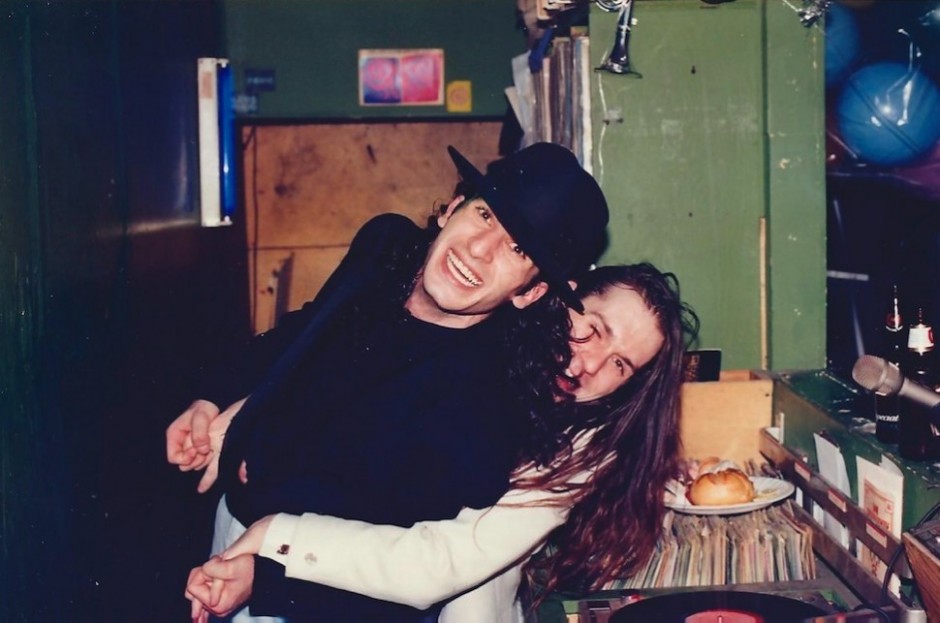
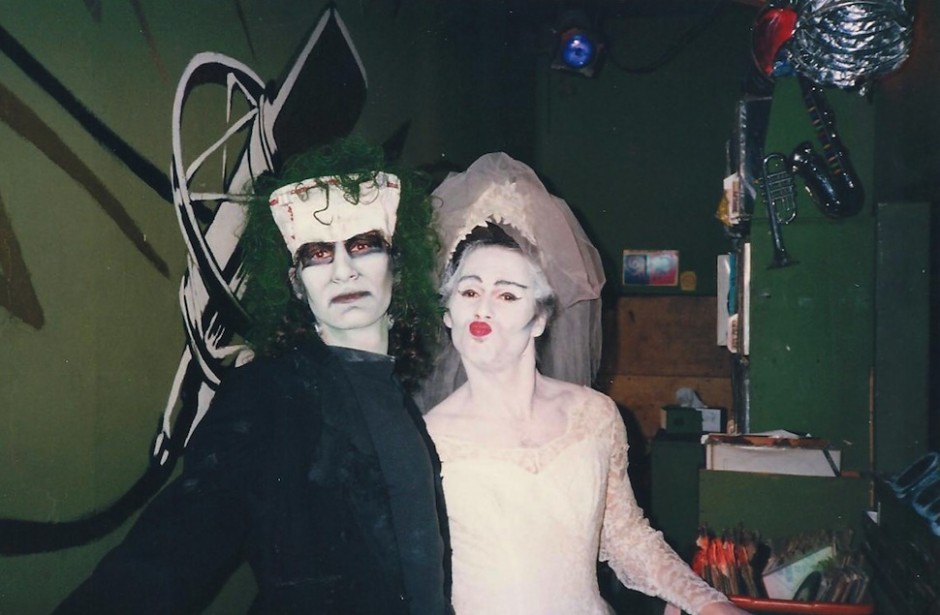





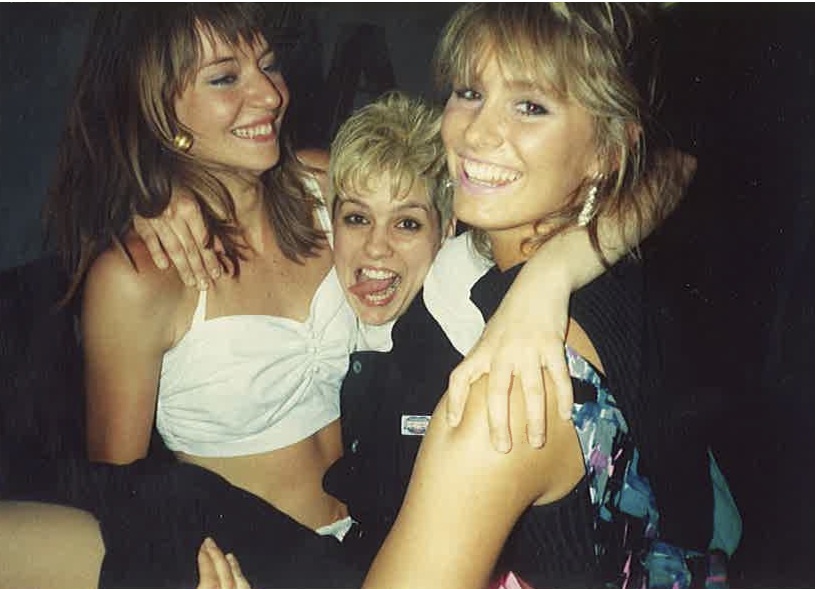




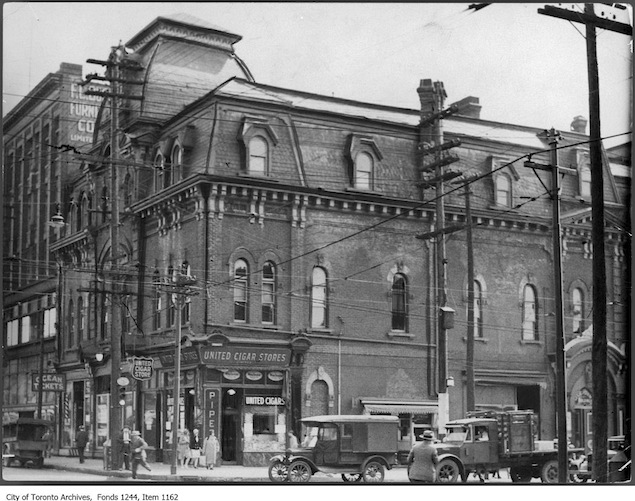






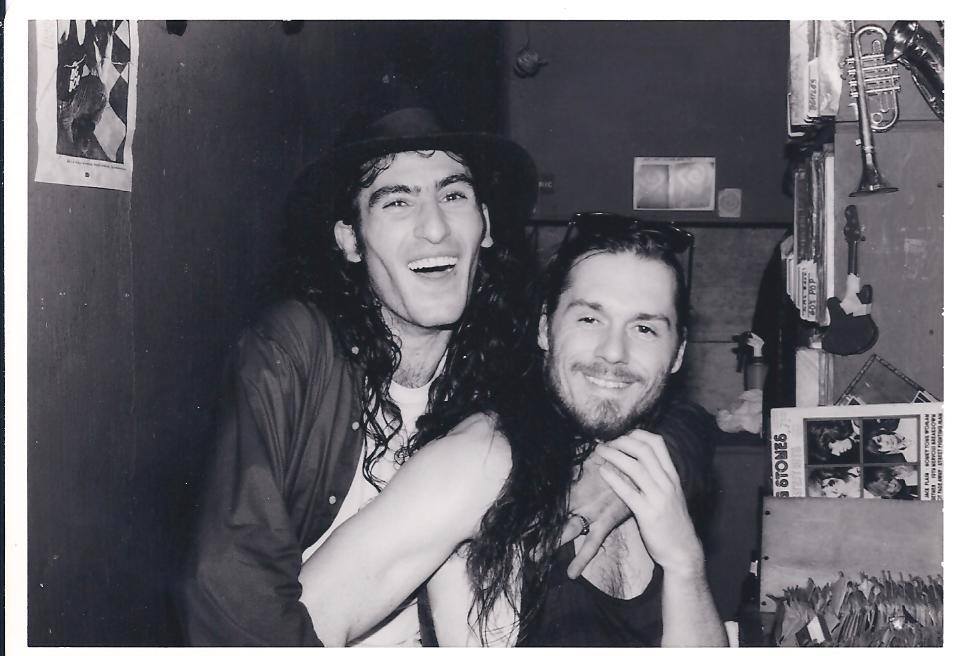
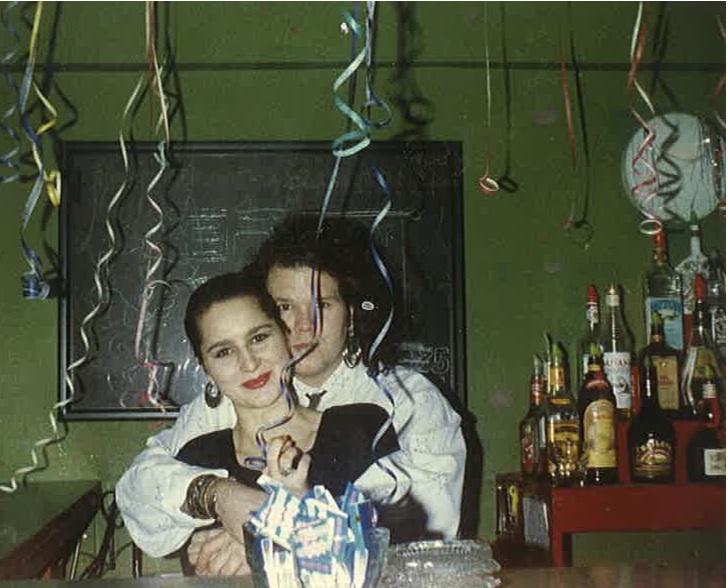








8 Comments
I worked the door at the Big Bop 1991 (?)-1994 and have nothing but fantastic memories of all the staff, the regulars, the wild and beautiful people who waited in such long lines to get in. I was attending OCA during day, worked door nights, and drank in after-hours with most awesome people mentioned here. Unforgettable time of my life. Moved to B.C. in 1995, travelled, worked, lived ,retired early 10 years ago and settled in N.S. I am 55 now, single dad with a 6 year old daughter, I imagine 10 years… before she starts dating and I’ll have to take that spot at the door once again. Hahaha…. Nothing like the maze of Sex,Booze, Rock&Roll and some controlled violence , all under one roof at The Big Bop. Great article ,Thanks for the memories !
I worked the main bar there with Jeff for years. Met some of my best friends there. I left to move to Argentina to be with my husband of thirty yesrs, but am still in touch with my Boo buddies!
Still have my BigBop ViP card in my mementos box, we used to get free entry with a pay stub from working at other Clubs (Bel-Air Cafe)
I told a friend of mine last night that I worked at the Bop in 1987. I was 17. I started in the summer 4 nights a week 9pm-3am…sometimes later. I was a bus boy.
I went back to high school to do my grade 12. I gave two of my shifts to a buddy of mine. Then he broke his foot which screwed up the schedule. Then a bunch of people with the same t shirts on showed up one Saturday and puke began flying. I was told to clean it up. I was un happy about it. Then later that night I was fired by a young woman who was very uncomfortable doing so.
I was a zombie most days at school. I would get home at 430am. sleep until 830am. Go to school until 3 or whatever then sleep at home until 8pm then back out to work.
I went to my first speak easy while working at the bop. It was great.
I just got turned onto this article from a friend of mine! There was a gang of us friends from Buffalo, NY, that frequented many of those clubs that were mentioned….. starting with with Ballingers Danceteria & Videotheqe advertised on Canadian radio stations that came in loud and clear here in Buffalo! We accepted your invitation to head north! In fact, our weekend adventures resulted in my best friend marrying a Torontonian and making it her home! In those days we would close the clubs in Cambridge or Toronto at 1:00am and be back in Buffalo by 2:30am to close the bars here by 4:00am! Don’t forget your neighbors south of the border that enthusiastically partied in that ’80′s magical era in Southern Ontario!!!
[…] started introducing dance music when I starting dancing at the Boom Boom Room owned by the The Big Bop‘s Ballinger brothers. I hung out with the DJ from the Boom Boom Room and he taught me how to […]
I just came across this website from a share on Facebook. Some great history in these articles, I played every room in that building many times over the years as did many of my peers (which makes for great convo). I think the thing that’s missing from downtown is the sense of community there used to be. All good things come to an end so I can’t be bitter about it, but it does make me feel nostalgic.
All comments in the string below have been republished from their original appearance on The Grid website. We’re including the readers’ comments as they add to these Then & Now stories. We look forward to reading new comments here as well.
Jeremy
When is part 2 of this article coming? 12:08 am on July 22, 2014
Denise Benson
Hi Jeremy, Unfortunately, The Grid folded at the beginning of July, both as a printed publication and website, so there will not be a Part 2 of this story here. I am currently developing a new site to host all of the past Then & Now stories, and to add new ones. When that’s complete, I will write Part 2 of this story as well as a few others, all to be included in the Then & Now book to be published in Spring 2015. Watch for news of the new site, new stories and Then & Now book here: https://www.facebook.com/ThenNowDeniseBenson In the meantime, all 46 existing Then & Now stories can be found at the following link, for as long as this website continues to be available (likely not for very much longer): http://www.thegridto.com/tag/then-now/ Thanks for your interest! DB 2:49 pm on July 24, 2014
Liam
When can we expect part 2? This was a great read. 5:23 pm on June 10, 2014
Andrea
Awe, the Big Bop means so much to me! I was the booking agent at the Big Bop from for about 7 or 8 years & experienced some of my most memorable musical moments in that building:) Some of the greatest musicians in our country graced the Reverb, Holy Joe’s & Kathedral stage, it was brilliant having 3 rooms which enable to to support very diverse styles of music & give incredibly talented artists a chance to develop their skills. I will always have fond memories of that place:) 10:12 pm on May 4, 2014
Stephanie
Great article and pics (thanks Joe!). Spent most weekends there from probably 89 – 96. First floor all the way. I sure recognize a bunch of people in those pictures. 8:29 am on May 4, 2014
DeejayAveryTanner
Nice job Denise. It’s a good thing I have no plans of running for public office. I don’t know where Lon got the idea that they were my sisters records but the rest is all true. 3:46 pm on May 3, 2014
tracey
Loved dancing @ the Big Bop. Was part of our club rotation along with The Copa, Diamond, Nuts & Bolts, The Edge …. WOW – great times we had – great people we met – fab memories! Had the pleasure of meeting Joe Santaguida years later as I worked with his wife in the corporate space. 2:58 pm on May 3, 2014
Sue
I loved working there in the 90′s. Can’t wait for part 2 of the story. Rob was the best manager. Worked with some fun people. 9:26 pm on April 30, 2014
Tapsucker
I have fond memories of that location. I remember seeing Long John Baldry play when it was briefly the Holiday and later partying at the ‘Bop regularly. Towards the late 80′s I lived a block away and started to see the effect on the neighbourhood, both good and bad… We used to get a lot of what we called the “amateur drunks” coming out of there. Puking on our doorstep and getting into altercations with mailboxes and garbage cans (usually losing LOL). We had a local skin head gang that wasn’t too well regarded by some of the neighbours, they took up a little community policing. It was quite funny, actually. One night I saw two rather preppy drunk guys pick a fight with them. The skins showed great discipline; they grabbed them and shoved into the back of a cab and told the driver to take them to North York. When the driver asked for more details, they just said “anywhere, let them walk it off”. I guess these problems eventually moved to the Entertainment District along with the dance floors. As for the bar itself, this article pretty much sums it up, it was brilliant. 2:18 pm on April 30, 2014
Carmel Debreuil
Great article! I had a ball working there – I started on popcorn, moved to tshirts on floor one then moved up to the beer bar on second floor! I used to live in a warehouse behind it and the parties seemed to continue every night there. xo 5:02 am on April 30, 2014
Bruce McCallum
Thanks for jogging my memory back to a great time in my life. After 15 years at the Horseshoe, I have hung up my bartending days and am currently in my third semester of culinary management. Who knows, maybe I’ll hit up the Ballingers for a cooking gig. Nice article and I look forward to part 2. 10:25 pm on April 29, 2014
hgsntdrgs
i started my career at the bop..freakshow in the 90′s and then all the raves i threw there from 97 on…when i opened basement and later Blak across the road..dominik from the cop was my mentor… i owe everything to the bop! <3 9:07 pm on April 29, 2014
Meaghan Clark
I danced there at least twice a week for years. Avery’s brother Mark became one of my good friends and eventually, a roommate. It was a huge part of my 20s experience. Denise, you captured the spirit perfectly. Thank you! 8:18 pm on April 29, 2014
Stephanie
I knew Mark well too for a while there. Bet we knew each other! 8:32 am on May 4, 2014